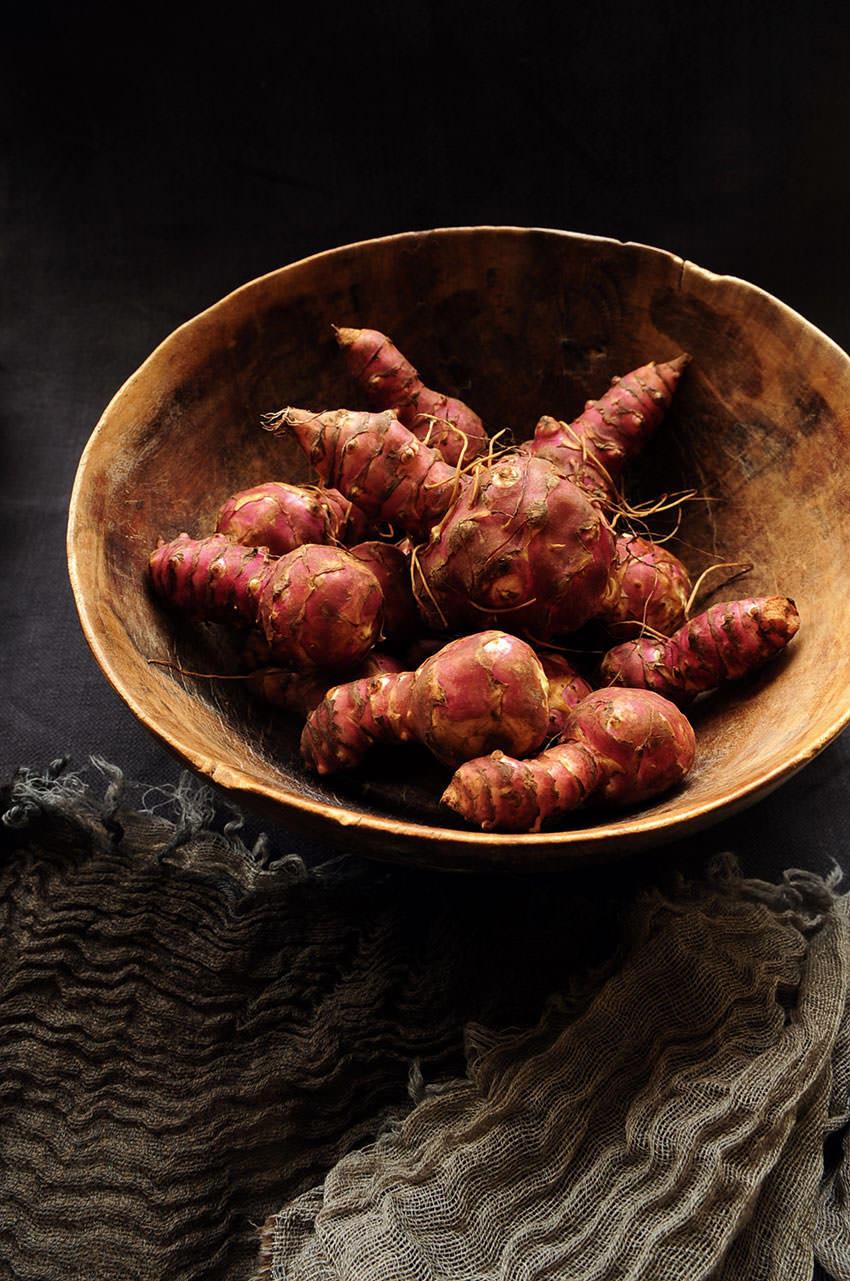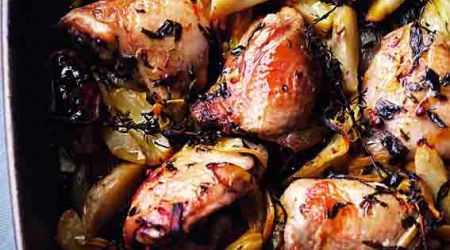Jerusalem artichokes
Clarissa Hyman unearths the charms of this often misunderstood vegetable with the poetic moniker, and finds that a tuber by any other name would taste as sweet with recipes by Linda Tubby
It may be small, lumpy and ugly, yet this plant bears one of the most beautiful names in the vegetable kingdom. If ever there was a disconnect, it is the Jerusalem artichoke. Would we feel differently about it if it was a handsome-looking root with a foul name, perhaps the ‘infernal’ artichoke? The way we describe food changes the way we react to and taste it, so it’s just as well we can approach this nutritious member of the tuber tribe with a positive frame of mind.
This would explain why ‘sunchoke’ is becoming a common alternative name for the Jerusalem artichoke, invoking both the sunflower-like plant from which the tubers come, and the fact that someone, somewhere, once thought they tasted like artichokes.
The history of the Jerusalem artichoke (helianthus tuberosus), and its name, is somewhat convoluted, even extraordinary. It originates in North America, but in France and Italy it was known as topinambour or topinambur after the members of a Brazilian tribe, the Tupinamba, who were brought as prize exhibits to the French royal court in 1613 – at about the same time that the explorer Samuel de Champlain came across Native Americans cooking with the tubers, and sent back samples to France.
Jerusalem artichokes have no botanical connection to the artichoke, but are a distant relative of the girasole (sunflower): the plants look somewhat similar, but the Jerusalem artichoke has smaller flowerheads. The English name for it seems to have evolved from the Italian word girasole although the vegetable has nothing to do with the Holy City. The name stuck, however, and gave rise in turn to another misnomer: the Palestine artichoke.
Whatever the name, these tubers suit any winter vegetable plot. They grow best in damp, fertile soil, but can survive in dry conditions, although the tubers might be smaller. Plant them in spring, 15cm down, or the stems will be blown over by the wind (they can grow up to 3m tall). They’ll look noble and tall with the frumpy, beige tubers hanging onto the root system just below the surface.
Cut down the foliage in late autumn. They need little attention, and can be left in the ground until you need them, and survive frosts and freezing conditions well – they must, however, be completely dug up every year or they will overrun the garden. They store well in a dark, cool place and only need washing under cold running water. Peeling them can be a trial if they are particularly gnarled and knobbly, but the good news is that varieties have become smoother and more elongated (think pink fir apple potato). The Boston red variety has rose-coloured skin and few knobs; the fuseau is long, white and smooth; the Gerard is smooth, purple-red and fairly round. Peeling is really optional because the skin is edible: the main reason to do so is aesthetic.
Slightly waxy, sweet and nutty with a faint perfume, Jerusalem artichokes can be used like most other roots and tubers: roasted, mashed, puréed or simply boiled and tossed in butter. They contain no starch which makes them meltingly soft, but also means they soon turn mushy. Keep a sharp eye on them; serve them so they are firm enough to hold their shape but are still soft inside.
You can deep-fry them as chips, or make them into sauces and soup where they impart a velvety texture. A classic is Auguste Escoffier’s Palestine soup, enriched with hazelnuts. Jerusalem artichokes are surprisingly versatile, can be served hot or cold, and pair well with mild, slightly sweet ingredients such as potatoes, nuts, nutmeg and prawns. Cardamom, bay leaves, mustard and truffle oil also set off their flavour. Try Jerusalem artichokes in creamy gratins and soufflés, or sliced thinly in a salad (the texture is similar to water chestnuts). Alternatively, you can balance their sweetness with some bitter endive, salty bacon, chorizo or black olives.
In Italian cookery, Jerusalem artichokes are enjoyed either raw in a bagna cauda, pre-cooked and finished with butter and parmesan, or cooked and eaten cold with a salsa verde. One 19th-century recipe, still popular today, involves sautéing them in olive oil and butter, with parsley, shallots, garlic and anchovies.
Chef Mark Hix recommends matching Jerusalem artichoke purée with scallops and black pudding: ‘The sweetness of freshly shucked scallops really works well with the earthiness.’ He also roasts them with shallots and rosemary to concentrate the sweetness, and serves them with lamb. Cookery writer Christine McFadden suggests stir-frying thickly sliced Jerusalem artichokes with meaty field mushrooms, garlic, parsley and plenty of sage.
Finally, we have to address the question of – please excuse the subject matter – flatulence. Jerusalem artichokes are rich in inulin, a form of natural sugar not easily broken down by our bodies. Eat a lot at once, and you may suffer. The trick, some say, is to eat a little and often until your body adapts. Others suggest mixing them with the same amount of carrot or potato, boiling them for at least 15 minutes, or cooking them for a long time at a low temperature, or storing them just above freezing. None of this may work. On the other hand, not everyone is affected the same way.
But, if you’re worried, just don’t serve them for a romantic dinner à deux. Wait until you’re married.

Recipes
Get Premium access to all the latest content online
Subscribe and view full print editions online... Subscribe




